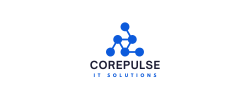Introduction
Cybersecurity compliance is no longer an option for Australian small and mid-sized businesses (SMBs) — it’s part of safeguarding sensitive information and avoiding legal and financial consequences. With the likes of the Notifiable Data Breaches (NDB) Scheme, the Privacy Act, and evolving industry demands, having a sound cybersecurity compliance checklist is key.
This manual de-mystifies the needs and processes necessary for every SMB in Australia to be audit-ready or cyber-breach ready, safe, and compliant.
Identify and Classify Sensitive Data
Understanding what data you hold — and how sensitive it is — is the beginning of any small business cybersecurity guide.
- Classify personal, financial, and client-sensitive information
- Prioritise data by risk and sensitivity
- Be atuned to Legal & Regulatory Needs

Comprehend Legal & Regulatory Requirements
Australian SMBs must be compliant with national laws like:
- Privacy Act 1988 (and Australian Privacy Principles)
- Notifiable Data Breaches (NDB) Scheme
- Any industry-specific requirements (e.g. financial, health)
1. Seek out the legislation apply to your business
2.Hire a compliance or privacy officer
3.Be cognisant of legislative amendments

Apply Access Controls
Access control is one of the most critical components of any SMB IT compliance document. Sensitive information or systems access should be limited to only approved staff.
1.Apply isolated logins per user
2.Apply least privilege
3.Enable multi-factor authentication (MFA)

Develop a Data Breach Response Plan
The NDB Scheme requires organisations to inform affected persons and the OAIC where personal information has been exposed.
1.Develop a step-by-step incident response plan
2.Define roles and responsibilities
3.Perform regular simulations of the plan

Secure Endpoints and Networks
Endpoint and network security are integral to SMB cybersecurity compliance.
1.Install firewalls and antivirus/EDR across all devices
2.Patch all systems with patches
3.Encrypt data in transit and data at rest

Train Staff for Security and Compliance
Human error is the largest reason for Australian SMB data breaches. Cybersecurity training mitigates risk and facilitates compliance.
1.Schedule regular mandatory training sessions every 6–12 months
2.Train against phishing, social engineering, and data handling
3.Take attendance and track materials.

Maintain Safe Backup Practices
Backups protect your business and facilitate compliance in case of ransomware or lost data.
1.Utilise automated, encrypted backups
2.Return backups offsite or in the cloud
3.Automatically Test backups on a regular base to demonstrate they can be recovered.

Document Everything
Documentation is the basis of compliance audits, audits, and insurance claims.
1.Have an information security policy
2.Keep system activity audit logs.
3.Documented risk assessments and mitigation controls.

Bonus: Make use of a Cybersecurity Framework
Compliance to a known framework might make compliance requirements easier.
1.Consider the Essential Eight from the Australian Cyber Security Centre (ACSC)
2.Use NIST Cybersecurity Framework for guidance
3.Follow industry-specific security standards (if required)

Take Action: Stay Compliant & Protect Your Business
Keeping up with cybersecurity compliance can be overwhelming — but you don’t have to do it alone. Visit our IT Security Services page to see how we help Australian SMBs meet their security and compliance needs.
Ready to get started? Contact us for a tailored cybersecurity compliance review.


